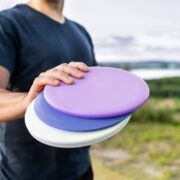The answer to “how long should you steep tea?” is not as clear-cut as might be expected. The truth is that various types of tea are available and many of them require various amounts of ‘brewing’ or ‘steeping’ time. A basic overview of the process is outlined below.
What is Tea?
Tea from the Camellia sinensis plant includes black, green, oolong, and white tea. It is grown on large fields of which topsoil should be very fertile. The leaves used to brew these teas are dried before being packed for export from their country of origin. The leaves can be safely stored in an air-tight container for a long period of time. However, the leaves need to be stored out of direct sunlight as this will lead to a loss of flavor and consequent reduction in the time they will provide a top-quality cup of tea. Tea plants can also got damaged and its leaves also gets fertilizer burn which results in the loss of their characteristics properties.
Steeping tea
The process of steeping tea is also referred to as ‘brewing’ tea. A great cup of tea will consist of just two constituents, the tea leaves and fresh water. The loose tea leaves should be contained within a ‘tea ball’ or infuser during the steeping period and then removed.
Water – The water used should be freshly boiled for each new brew. The use of previously boiled water will reduced the quality taste of the cup of tea. Let the water boil and only use the freshly boiled water to make the tea. The water should always be poured on to the tea leaves, never put the tea into a cup of hot water. The tea and the tea leaves should be separated after the tea is brewed.
In the Cup – Once the tea and water have been added to the cup, the cup should be covered with a saucer or other small, ceramic plate during the steeping period. The time period for steeping may vary with different types of tea, but it is essential that the tea is not over steeped as this will result in a rather bitter tasting beverage.
Teas made from the Camellia sinensis plant will require various temperatures of hot water and slightly different steeping times as indicated below.
Black Tea Temperature 88c to 96c with a steeping time of 2-3 minutes
Green Tea Temperature 77c to 85c with a steeping time of 2-3 minutes
Pu-erh Tea Temperature 100c with a steeping time of 3-4 minutes
Oolong Tea Temperature 96c to 100c with a steeping time of 2 minutes
White Tea Temperature 71c to 85c with a steeping time of 2-3 minutes
The figures indicated above are not ‘set in stone’, personal taste is important and variations in time and temperature may suit an individual person. Therefore, steeping is not an exact science. It should be considered that leaving tea to steep for a longer period of time will not produce a ‘stronger’ cup of tea. Strong tea requires more leaves to be added prior to the water being poured into the cup.
Tea leaves or tea bags?
When steeping tea it is considered that the best flavor will be produced by using loose tea. However, there are some advantaged to using tea bags as they are easier to clean up and remove from the cup after use. Unfortunately, some lower quality tea bags contain a tea powder rather than tea leaves. This means the flavor from the leaves expanding during the steeping process is not as good as when using leaf tea.
Steeping and iced tea
The method for steeping iced tea is similar to that for hot tea. After the tea is steeped it is allowed to cool and then placed in a refrigerator to chill completely. The methods of steeping the various types of tea can be seen here.
The basic requirements for steeping tea and getting a perfect cup every time have been outlined above. However, personal taste is important and if an individual prefers to use tea bags rather than leaves or to make the brew stronger or weaker, then they can experiment over time to find out what is ideal for their particular needs.










Comments